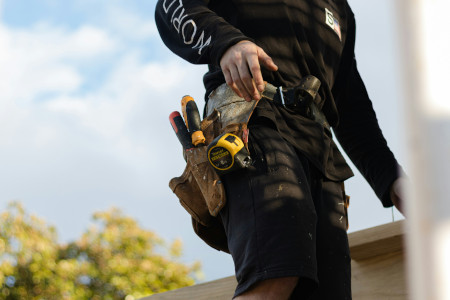Disclaimer
Market Financial Solutions are a bridging loan and buy-to-let mortgage provider, not financial advisors. Therefore, Investors are encouraged to seek professional advice. The information in this content is correct at time of writing.

The question of how to fix the housing crisis is not an easy one to answer. We’ve been struggling against it for decades and still seem no closer to resolving the issue. Put simply, the UK, in comparison to other European countries, has a backlog of 4.3 million missing homes, according to the Centre for Cities.
Several causes for this issue have been put forward and debated for years now. Chiefly, councils and housing associations across the UK have been accused of not building enough social housing to keep up with demand.
This lack of building can be traced back to the 1947 Town and Country Planning Act. This piece of legislation led to greenbelts across the UK, which eventually limited where houses could be built.
Various economic factors have also played their roles. Rising wealth inequality, property speculation, a growing population, and more all played their part in limiting access to housing.
As did quantitative easing. After the 2008 financial crisis, interest rates plummeted to near-zero levels and stayed there for around 13 years. This lowered borrowing costs dramatically. Money, in effect, became cheap.
Many believe some of this cheap money funneled its way into certain assets like property, inflating prices as a result. As property prices skyrocketed, some people were prevented from getting on the housing ladder at all.
Ultimately, all these issues and more likely led to our current challenges in the market. The answer to the question of how to fix the housing crisis will be dependent on multiple efforts, from multiple fronts.
There is no one right answer here. But, there are a few key options we could start with.
1. We need to get serious about building
Simply getting more homes built will be the most obvious answer for many and, typically, the onus is on the government to get this done. Infamously, the state has faced a target of building 300,000 new homes a year by the mid-2020s.
This is considered by many experts to be the minimum required to keep up with demand. But, this target hasn’t been hit once since at least the early 2000s.
Still, both major parties plan to amend this over the coming years. Keir Starmer has laid out plans to get 1.5 million new homes built over five years should Labour get into power. Lee Rowley, the current Minister for Housing, also recently declared that the Conservatives will meet their pledge to build a million homes by the end of this parliament.
There has also been a renewed focus on social housing from both the government, and the opposition. Downing Street wants to give UK families higher priority for social housing in a “British homes for British workers” scheme, according to the Guardian.
Meanwhile, Labour plans to revamp the right-to-buy programme, allowing social tenants to buy their council homes at dramatic discounts. With a general election looming, all eyes will be on both parties on how they handle this crucial issue, and if they follow through with their promises. For many though, it would be better if the government took a step back from tackling housing.
2. Stepping back and allowing the market to get to work
Many of those with a libertarian view believe that in order to answer the question of how to fix the housing crisis, we need to turn away from the state. Some experts and commentators believe government interference is only hindering housebuilding efforts.
Only by embracing free-market economics can we resolve the issue. By taking a step back and allowing the private sector to get on with it, they argue that we could see a wave of new housing.
There is evidence that, to a certain extent, both Labour and the Conservatives plan to reform certain planning rules, allowing builders and developers to get on with the business of building houses. Keir Starmer plans to fix England’s “restrictive” planning system, opening up brownfield sites and some green belt land for development.
While in the Autumn Statement, Jeremy Hunt vowed to clear our current planning backlog, and ease up Permitted Development rules. These efforts may allow for the delivery of new homes. But, while some believe the key to success here is in getting the state to step back, many others feel more intervention will yield better results.

3. Taxes and intervention
For some, it may be obvious that action must be taken to kick builders who (arguably) have been sitting on their hands into action. This isn’t exclusively an issue for the public, or the private sector either.
Both, to a point, have been accused of not doing enough to fix the housing crisis. For instance, Michael Gove, the Housing Secretary, has threatened to act against English councils that miss deadlines to submit their housing plans. He also recently called out private housebuilders for “land banking”, as it was found that the top ten housebuilders alone had 700,000 building plots laying idle.
A key tool to influence change is of course tax, and there have been suggestions on what could be introduced. Taxing land more effectively could result in a fairer housing market. What’s more, discussions on a wealth tax are forever ongoing, with supporters arguing it could fix everything from the stability of democracy, through to the wider global economy.
4. Conversions over new builds
Rather than building scores of new homes from scratch, we may also be able to, at least partly, address our housing shortages by looking at the commercial market. The scars of the pandemic still plague our high streets, and many will be dismayed by all the existing space out there just going to waste.
There are an estimated 165,000 privately owned commercial and business premises sitting empty across Britain, according to Big Issue. Also, councils across England, Scotland, and Wales are sitting on enough empty commercial property to create more than 19,500 homes. In the residential market, nearly a quarter of a million properties in England have been left empty for months.
Turning these empty properties into liveable, desirable homes won’t address the housing crisis entirely. But, it would at least make a dent.
5. Property investors will always have a role to play
So, how to fix the housing crisis? In truth, it will likely require elements of all the aforementioned ideas and more. The issue is simply too complicated for one singular, all-encompassing answer.
What we can predict with some confidence, however, is that private investors will always have a role to play in keeping the housing market sustainable.
Where property investors want to play their part in bringing more housing to the market, we will be there to support their vision. Our loans can be used for acquisitions, conversions, BTL investments, and more, and we are keen to put our funding to use.
The Complete Guide to
Buy-to-Let Mortgages
Everything you need to know
- Fundamentals
- Different mortgage types
- Useful tools
- Industry stats & more





